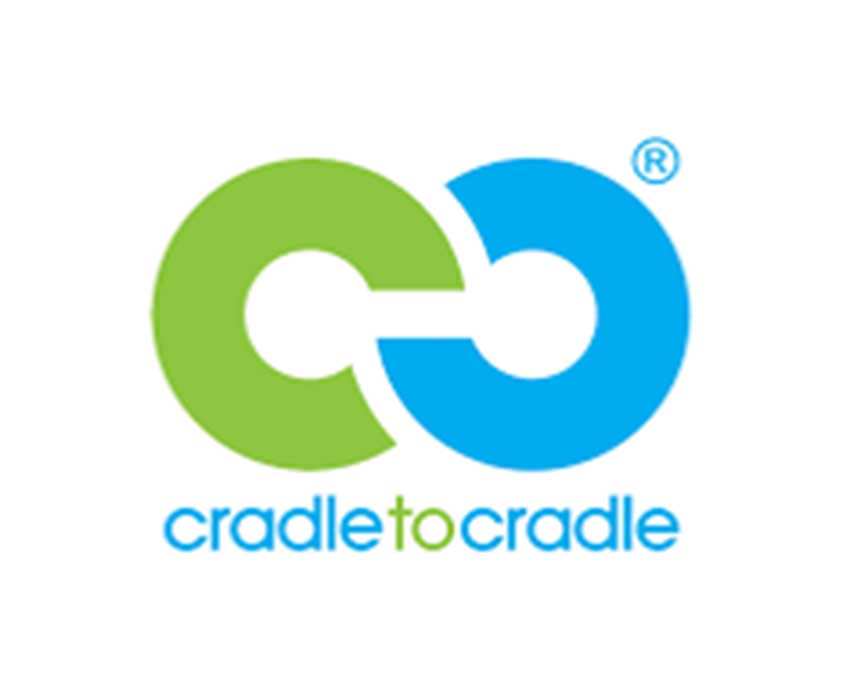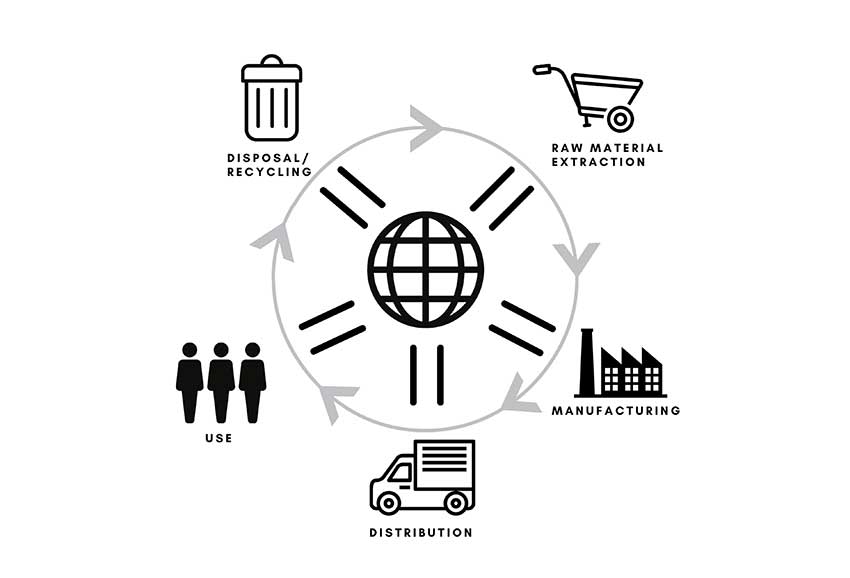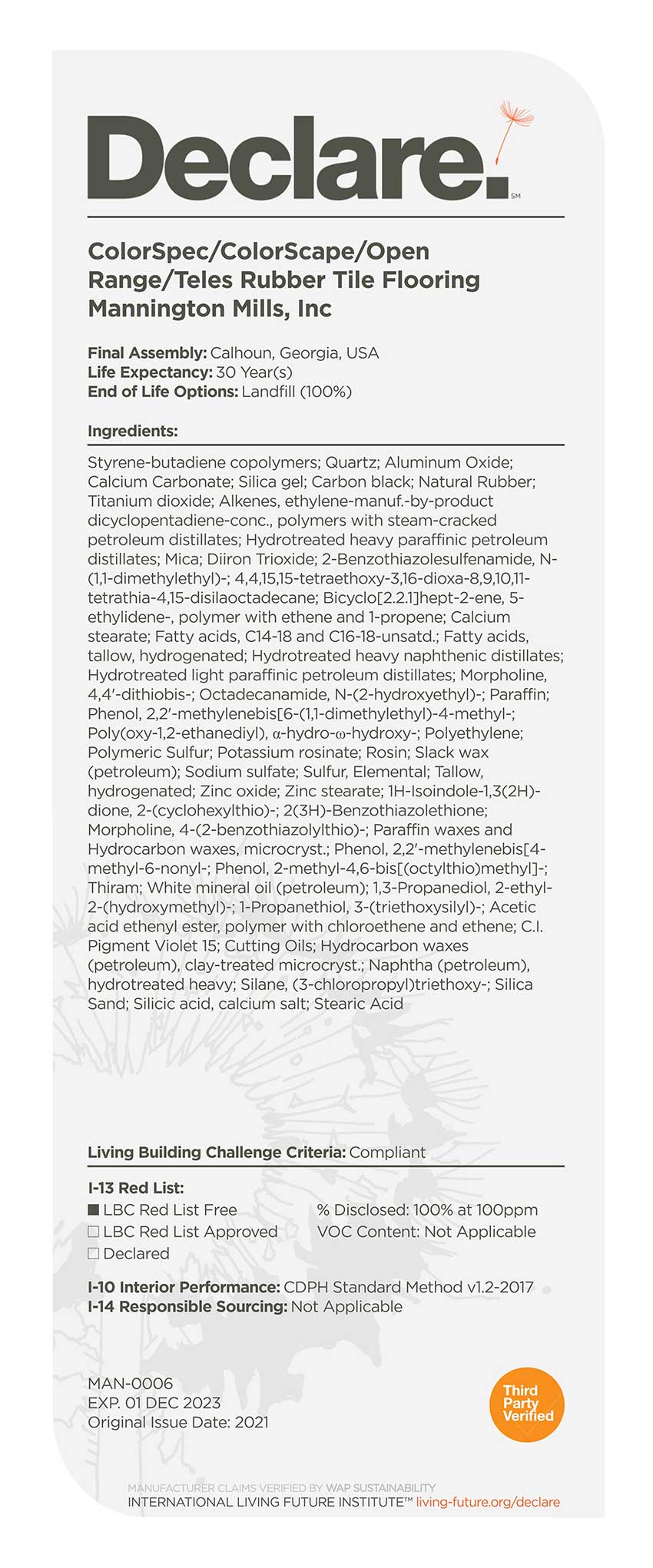Resilient Flooring-Certified!
Health and Wellness Impacts
The purpose of this section is intended to demonstrate that when in compliance with the standard requirements, flooring does not pose a health risk when installed, used, and maintained per the product manufacturer’s recommendation. Volatile Organic Compounds (VOCs) emissions and content follow the same requirements in the FloorScore® Certification and subsequently are the same requirements found in building rating systems and the IgCC. Total VOCs are part of Level 2 criteria. Product ingredient transparency is provided through the requirement to provide an ingredient disclosure report that declares a minimum of 1,000 parts per million (ppm). There is also information required on no intentionally added heavy metals for all products and on no intentionally added orthophthalates for vinyl products, which aligns with requirements in the ASSURE™ certification program. Level 2 criteria include identifying raw material chemical hazard classifications, completion of a product risk assessment, and ingredient optimization.
Social Impacts
The purpose of this section is intended to incorporate social responsibility in providing a desirable, just, and fair workplace for the product manufacturer and the organization seeking certification. In some cases, the physical point of product manufacture and organizations seeking certification may be one and the same. Policies are required that address community outreach programs, prevention of discrimination policy, prohibitions on forced labor policy, and prohibitions on child labor policy. For organizational assessments, completing an Impact Assessment utilizing the B Impact Assessment is required (not requiring third-party certification). Additional Level 2 criteria address transparency and social hotspots through supply chain social responsibility policies, additional third-party verifications, and a supplier social responsibility audit.
It is important for specifiers and design professionals to realize that there is far more depth to a multi-attribute certification and the rigor of the compliance documentation and process that is based on a consensus based standard. If a resilient flooring product is certified to the NSF/ANSI 332 Standard, the manufacturer has established meeting FloorScore® certification requirements, attributes of the ASSURE™ Certification that are applicable to other types of resilient flooring (in addition to rigid core flooring), such as addressing heavy metals and utilization of an alternative plasticizer(s) that are not orthophthalates, and has completed a Product Specific Type III EPD and/or has participated in providing data to complete an Industry Wide Type III EPD. Overall, knowing a resilient floor covering product has met criteria for Level 1 or Level 2 Certification provides assurance and demonstrates to the specifier the proactive approach to environmental, health and wellness, and social impacts as related to resilient floor covering products.
ADDITIONAL ECOLABELS FOR RESILIENT FLOORING
In addition to the certifications and environmental product declarations, there are additional certifications and ecolabels that are utilized within the resilient floor covering product sector.
Cradle to Cradle Certified®
The Cradle to Cradle Products Innovation Institute leads the certification program Cradle to Cradle (C2C) Certified®. The certification is a multi-attribute certification program that focuses on material health, product circularity, clean air and climate protection, water and soil stewardship, and social fairness requirements. There are four different levels of certification, Bronze, Silver, Gold, and Platinum; with higher levels of recognition provided as increased environmental performance is sustained, supply chain transparency increases, circular economy is reinforced, and for the highest Platinum level, a manufacturer has incorporated environmental objectives into employee performance evaluations as an active way to achieve organizational goals. Cradle to Cradle Certified® Product Standard Version 4.0 is the current standard and launched in April 2021. There is a reporting documentation template available to use to demonstrate cradle-to-cradle circularity called the Cradle to Cradle Certified® Circularity Data Report–meaning that the product starts out being manufactured, is sold, distributed, and installed, has a useful service life, and then is recycled to provide feedstock for the same product type. Note that this covers all the life cycle stages evaluated in a Life Cycle Assessment as documented in an Environmental Product Declaration.

Photo courtesy of Cradle to Cradle Products Innovation
Cradle to Cradle Certification.

Photo courtesy of Photo courtesy of Resilient Floor Covering Institute (RFCI)
Cradle-to-Cradle circularity diagram. Cradle-to-cradle life cycle assessments look at the end-of-life stage as an opportunity to recycle or reuse a product as a feedstock back into the same resilient flooring product.
Declare Label and Health Product Declarations
Transparent reporting of ingredients or feedstocks in a product can be conveyed to specifiers through a Declare Label or a Health Product Declaration®(HPD). These can be utilized to fulfill requirements within the NSF/ANSI 332 Standard in the Health and Wellness Impact Section.

Photo courtesy of Photo courtesy of Mannington Mills
Declare Label Example.









